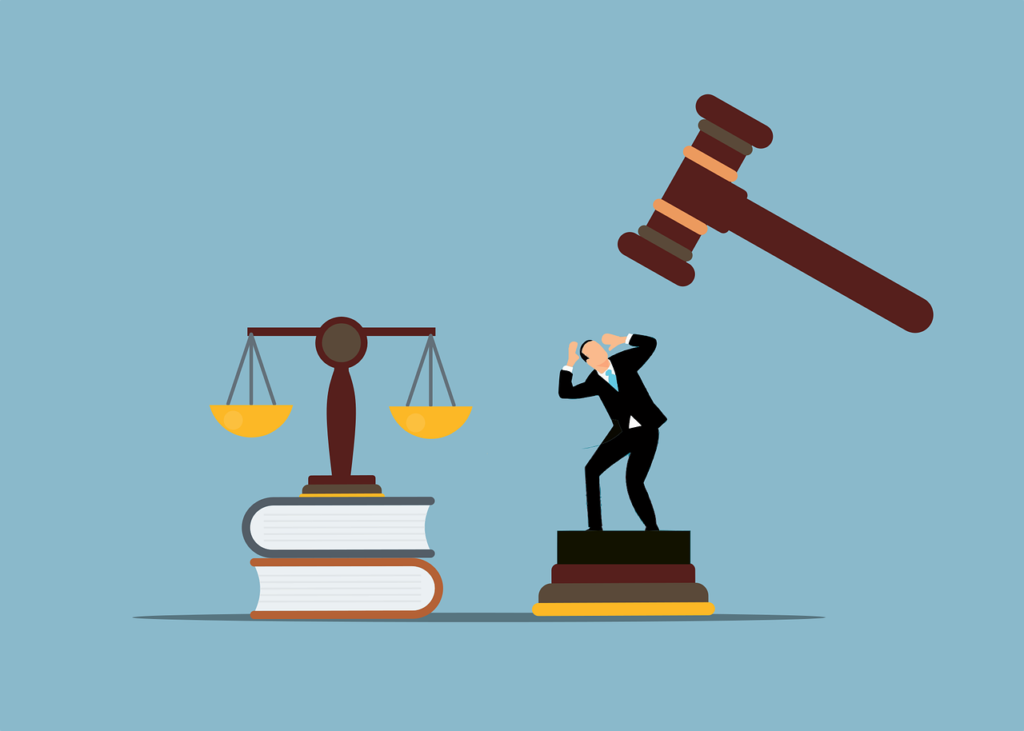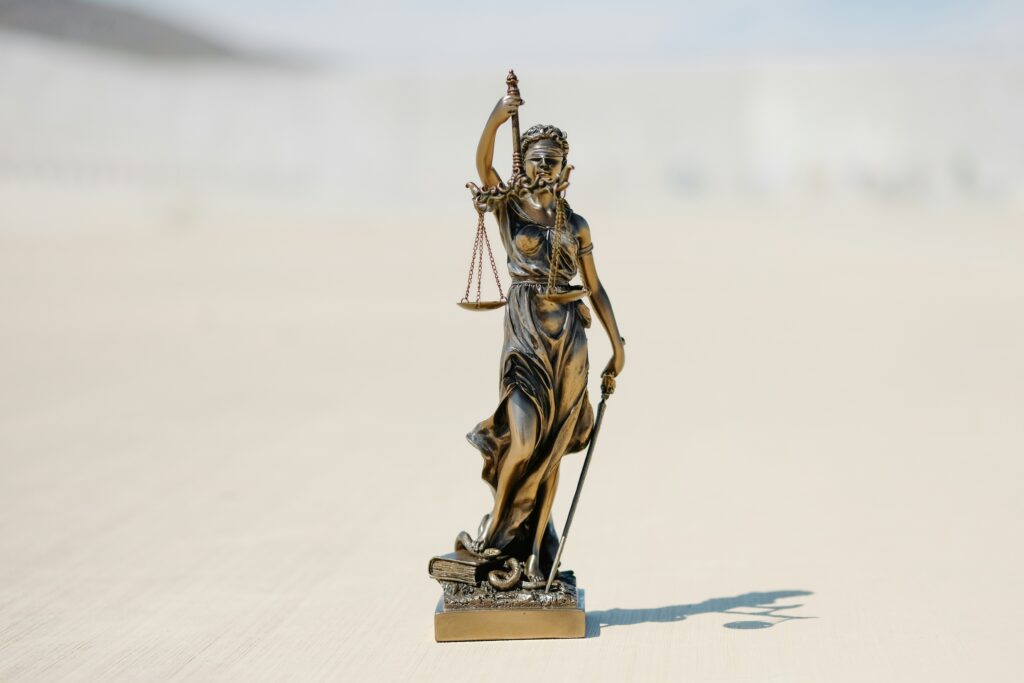Published On: 4th April, 2024
What are the thoughts that flow through our minds when we watch our favorite movie? Thoughts like, ‘That’s a great dialogue!’, ‘Such amazing background music!’, ‘The story is well-written’, ‘The lyrics struck a chord’, ‘What a unique character’, and a lot more. All these are creative ideas and expressions that are presented in an enthralling audio-visual format before the audience. These creative ideas and expressions are simply the intellectual property of movie directors, production houses, writers, song lyricists, music composers, and other involved artists.
Indian Cinema is known worldwide for the astonishing number of films that it produces every year. These films are produced in different cities and are widely distributed all over India and internationally as well. These are exhibited before an audience that exceeds billions. All these factors make it clear that Indian films are embedded with a huge sum of intellectual property that deserves protection.
The World Intellectual Property Organization i.e. WIPO defines intellectual property as – “creations of the mind, such as inventions, literary and artistic works, designs, names, symbols, and images used in commerce.” This definition highlights that intellectual property encompasses diverse categories of intangible creations and it also applies broadly in India.
India has specific laws that govern different types of intellectual property. These laws protect different aspects of creative and artistic works. When it comes to Indian cinema, these laws grant and protect exclusive rights over all the intellectual property of a movie, to their respective entities.
Copyrights, trademarks, design rights, and licensing are the most extensive means used to protect intellectual property rights in the Indian film industry.
Background –
Before the major legislations that govern intellectual property and their respected rights came into force, movie directors and producers majorly relied on community norms, ethics, civic sense, and individual morals to protect their creations. There was an unsaid norm- one must not copy another’s literary or artistic work because that is morally wrong. However, this norm was exploited to the fullest extent especially when movies were re-made in different languages, by different directors and producers without the permission of the original scriptwriter and director. Also when studio owners exhibited excessive ownership over the movies, denying the ownership rights of other deserving artists.
However 1950’s onwards, when the golden age of Indian cinema began, important legislations were enforced that not only protected the intellectual property rights of artists but also created widespread awareness about them. These legislations have created a codified legal framework for all the intangible assets of Indian cinema.
Forms of intellectual property –
It is no secret that Indian cinema is known for enthralling audiences with the vibrant amalgamation of stories, dialogues, music, and dance. The songs, background music, dialogues, choreography, and characters are the foremost assets for which a film is known and appreciated. These are also the precious intellectual property of the filmmakers. Here’s a breakdown of different forms of intellectual property and the means to protect the same –
Protected by Copyright –
- Script and Screenplay – includes story, narration and dialogues
- Music and Lyrics – includes background score, composition, and lyrics of songs
- Cinematographic work – Audio-visual expression of the story and other nuanced details like backdrops, lighting, etc.
Protected by trademark, if distinctive and identifying marks –
- Title and character names
- Studio logos and slogans
Strong and distinctive trademarks allow the licensing of characters and logos for revenue generation through merchandise while ensuring that classic films and characters are not illegally exploited.
Copyright-
Copyright is a bundle of rights given to creators over their creations as a measure of protecting and rewarding creativity. An author is a person who creates the work, and he/she is the first owner of copyright.
The Copyright Act, of 1957 was the first legislation in India to protect original literary, musical, and artistic works. This act grants exclusive rights to the creators of these original works. These rights include ownership, reproduction, adaptation, translation, public performance, and broadcasting.
Concerning cinema, a cinematograph film i.e. any work of visual recording that includes a sound recording accompanying visual recording, and musical sound recordings is also protected under this act.
As per Section 17 of the Copyright Act, the producer is the first owner of the copyright for a cinematograph film and sound recordings. However, the producer is not the only one who has rights over the film and sound recordings. The other deserving artists are also right-holders of other special rights.
In 2007, Shree Venkatesh Films Pvt. Ltd. was accused by the makers of the blockbuster Hindi film, ‘Namastey London’, of copying the storyline and screenplay without their permission and using the same in their Bengali film. The matter was brought before the Calcutta High Court, but a settlement (offering of sum and acknowledgment by the accused) was sought between the makers before the final verdict. Thus, this case highlights how a film can be protected by copyright.
A copyright is not protected in perpetuity. Section 26 of the Copyright Act specifies that in the case of films and sound recordings, it is protected for a period of 60 years from the date of publication.
The acquisition of a copyright is automatic, it comes into existence as soon as the work is created without any formality. Registration of copyright is paramount, however yet not mandatory. Upon registration, a certificate of copyright is awarded to the first owner, which would be the prima facie document of evidence in case of any dispute relating to the ownership.
Performer’s rights –
A performer is usually an actor, singer, musician, composer, dancer, lyricist, scriptwriter, narrator, etc. A performance means any visual or audio presentation made by the performer.
As stated in Section 38A of the Copyright Act, once a performer has by written agreement consented to the incorporation of his performance in a cinematographic film, he/she cannot claim the performer’s rights as the same would be now assigned to the producer of a film.
However, the performer does not lose all his rights. Here are a few rights that the performer continues to hold after giving up the performer’s rights –
- Economic rights – The performer is entitled to claim royalties for their contribution.
- Attributive rights – The performers have the right to be identified for their contribution.
- Moral rights – The performer has the right to restrain or claim damage with respect to any distortion, mutilation, or other modification of performance that could be prejudicial to his reputation.
In 2006, Singer Neha Bhasin made allegations against Film producer Anand Raj Anand, claiming that the producer falsely credited another singer for her work leading to misrepresentation, violation of her performance rights, and ultimately damage to her reputation. The court ruled in her favor, acknowledging the importance of crediting performers for their work, even if they do not hold copyright over the same.
Broadcaster’s rights-
Broadcast means communication to the public by any means of wireless diffusion, whether in any one or more of the forms of signs, sounds, or visual images or by wire. Section 37 of the Copyright Act, grants a special right known as a ‘broadcasting reproduction right’ to every broadcasting organization. This right lasts until 25 years from the beginning of the next calendar year (next to the year in which the broadcast is made).
Broadcasting organizations include TV channels, radio stations, OTT channels, and other entertainment service providers. These do not include theatres and film festivals.
The Ministry of Information and Broadcasting governs the broadcasting sector and issues guidelines for broadcasting rights for films.
Film producers are the first owners of the broadcasting rights. These rights are then sold or licensed to broadcasting organizations.
Cinematograph Act, 1952-
The Cinematograph Act, of 1952 makes provision for the certification of films for exhibition and for regulating public exhibitions of films using cinematographs. Cinematograph includes any apparatus used for representing films. Through this Act, the Central Board of Film Certification (CBFC) was established under the Central Government of India for the purpose of examining films and sanctioning them for public exhibition.
There are various categories in which films are certified, they include – Unrestricted public exhibition (U), Suitable for children only with parental guidance (UA), Restricted to adults (A), and suitable only for members of a certain profession (S).
Section 10 of this Act, mentions that no person is allowed to exhibit a film using a cinematograph in a place that is not licensed under the act. Section 11 of the Act states that the District Magistrate in states shall be the official licensing authority, having the power to grant licenses only after all the rules and regulations stated in the Act are complied with.
The licensing authority grants licenses for public exhibition of films to venues after they have met the safety and security standards such as no-objection certificates from fire, police, and other relevant authorities.
The Film Federation of India facilitates licensing agreements and helps in resolving disputes.
Licensing –
Licensing is the process that involves granting permission to use various intellectual property rights associated with a film to another party for a specified purpose and duration in exchange for a fee.
Licensing is the paramount step that filmmakers take in order to protect their creations from being illegally exploited as well as generate revenue from the film’s exhibition.
The process of licensing typically involves –
- Identifying required licenses – determining which creative expression requires licensing
- Identifying the right holders of the film
- Negotiation and Pricing – The film producers and applicant organizations negotiate further details like the duration of the license, the price of granting such a license, and other terms and conditions.
- Agreement – Drafting and executing a formal licensing agreement consisting of terms and conditions agreed upon by both parties.
- Clearances – Parties must ensure all necessary copyright clearances that are obtained for the licensed elements.
- Compliance – Parties must adhere to relevant regulations and guidelines set forth by the Copyright Act, Central Board of Film Certification, and other authoritative entities.
Exhibition rights, Music licensing, and content licensing are the most commonly used types of film licensing in India.
Exhibition Rights – These are popularly known as theatrical licensing rights. Film producers grant these rights to distributors, who further negotiate with theatres for screening. Duration of screening, revenue model, territorial limits are some of the main terms considered in these negotiations.
Music Licensing – Copyright holders such as music composers, music label companies, publishing houses, record studios, lyricists and singers, grant permission to use their pre-existing music (licensed songs, background scores, musical compositions)in a film. Film producers and music producers of the film, acquire these rights. Duration of use, type of music, territory limitations are some important considerations.
Content licensing – Filmmakers and production houses acquire these rights from the original copyright holders of existing literary works. This license gives the filmmakers permission to adapt the works in their film. This license has a very wide scope and can also extend to remake rights in certain cases.
Why is copyright and licensing necessary?
Copyright is the most substantial way the creative expressions in a film can be protected from commercial and illegal exploitation. It grants ownership to the copyright holder automatically and exclusively giving them the power to decide the fate of their work and bank on the same. It lets the owner maintain their legacy while providing legal protection.
Meanwhile, Licensing is the most credible way in which filmmakers generate revenue. It helps the film reach a larger audience through various distribution methods. If backed with strong trademarks, it allows filmmakers to increase brand value through merchandising. To simplify with an example, consider the Dhoom franchise, which is backed with a strong trademark, and the copyright owners of the film i.e. Yash Raj Films, collaborated with Mattel, to create merchandise which became a huge success, generating additional revenue.
Copyright is the first step to licensing, as it forms the legal basis and proof of ownership. Licensing lets copyright holders enjoy commercial benefits through distribution. Thus copyright and licensing are both together extremely necessary for films.
Conclusion-
Intellectual Property Rights in Indian Cinema involve a delicate balance between protecting artistic rights and enabling commercial exploitation. Cases of copyright infringement and licensing violations are major setbacks; however, they push for stronger enforcement of laws and create widespread awareness amongst the film industry and audience.
With the entertainment industry rapidly shifting to digital platforms, the complexity of these rights is bound to increase, but at the same time, the industry has inculcated immense respect for the intellectual property rights of creators and artists.
Ultimately, stronger copyright laws, transparent and fair licensing processes, deserving compensation to creators, and constant refinement of the legal framework can further contribute to the evergreen Indian Cinema where creativity flourishes and intellectual property is protected.
References-
- ‘CBFC’ < https://cbfcindia.gov.in/cbfcAdmin/ > accessed 20 February 2024
- CBFC India, Cinematograph Act 1952,< https://www.cbfcindia.gov.in/cbfcAdmin/assets/pdf/cine_act1952.pdf>accessed 20 February 2024
- Copyright Office-Government of India, Copyright Act 1957,<https://www.copyright.gov.in/Documents/Copyrightrules1957.pdf>accessed20 February 2024
- Government of India, A handbook of copyright law,<https://copyright.gov.in/documents/handbook.html> accessed 20 February 2024
- ‘Shree Venkatesh Films Pvt. Ltd vs Vipul Amrutlal Shah & Ors on 1 September, 2009’<https://indiankanoon.org/doc/74674876/> accessed 20 February 2024
- ‘Neha Bhasin vs Anand Raj Anand And Anr. on 20 April 2006’ <https://indiankanoon.org/doc/115078/>accessed 20 February 2024




